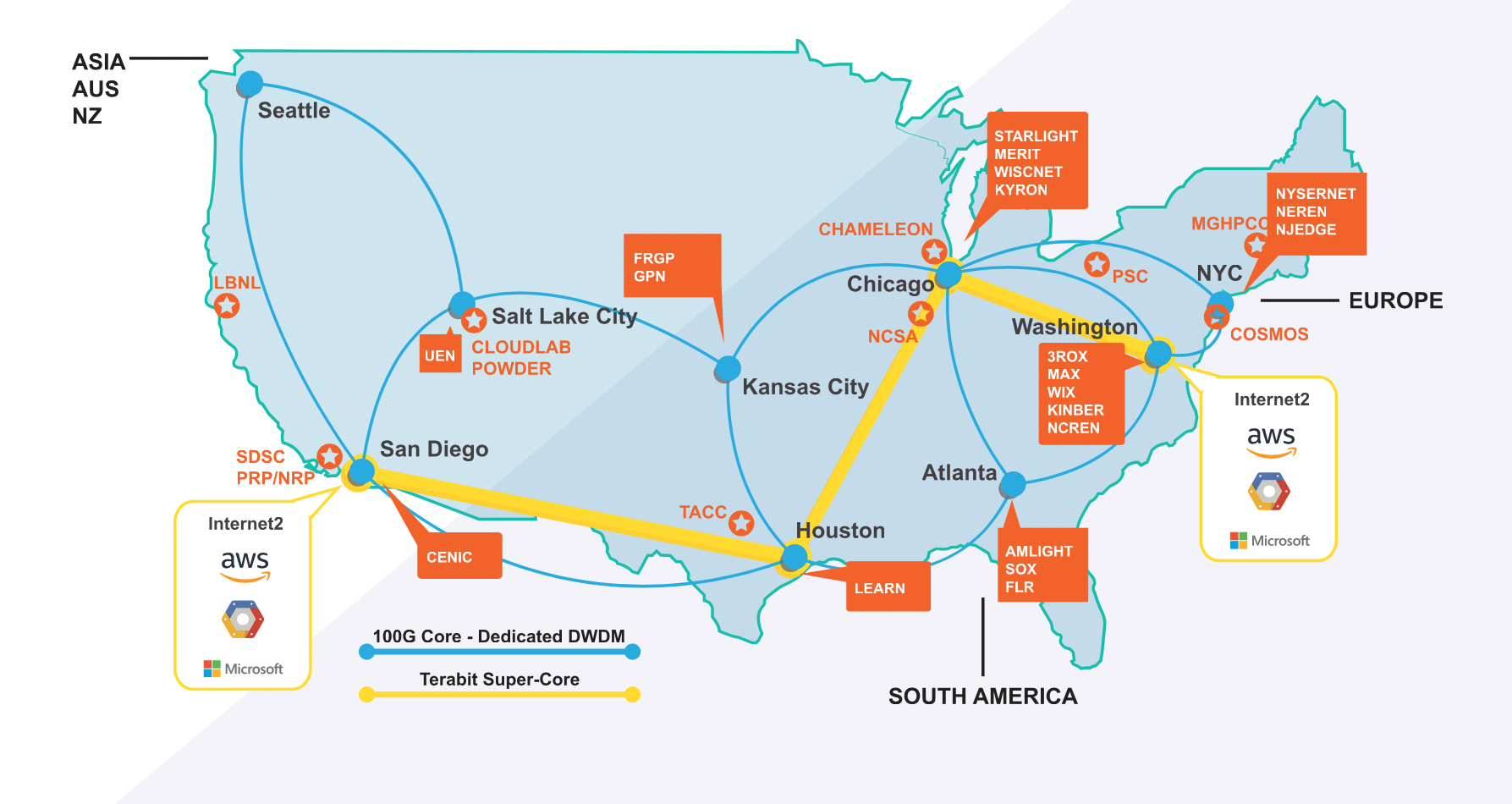You’re accessing archived content
This is archived content from the UIT website. Information may be outdated, and links may no longer function. Please contact stratcomm@it.utah.edu if you have any questions about archived content.
FABRIC, the future of the internet, runs through two U testbeds

This map (select to enlarge) shows the anticipated topology of the FABRIC network, of which the University of Utah is a facility partner. Image courtesy of FABRIC Testbed.
The internet simply wasn't built to handle today's networking infrastructure. Decades
ago, massive data sets and automation were, if anything, the stuff of science fiction.
In an effort to overcome bottlenecks that later emerged, and provide the basis for more robust internet network infrastructure, in September 2019 the National Science Foundation awarded a $20 million grant to create an initiative called FABRIC, of which the University of Utah is a facility partner.
The focus of the four-year endeavor is to create a nationwide high-speed (100-1,000 Gigabits-per-second) network, on which novel internet architectures can be tested. The expected result is entirely new networking protocols, architectures, and applications, and eventually, better performance, security, and adaptability in the internet.
"The internet has been a great enabler ... but it is showing its age and limitations, especially when it comes to processing large amounts of data," Ilya Baldin, director of Network Research & Infrastructure at the Renaissance Computing Institute (RENCI), said in a press release. RENCI, at University of North Carolina at Chapel Hill, is the lead institution on the project. FABRIC's core team is made up of researchers from UNC-Chapel Hill, University of Kentucky, Clemson University, Illinois Institute of Technology, and the Department of Energy's Energy Sciences Network (ESnet).

Dr. Robert Ricci,
School of Computing
FABRIC will also intersect major research centers and national computing facilities. Two of the U's computing testbeds — CloudLab, for cloud computing, and POWDER, for mobile and wireless networking — will tie into the network.
"It's very exciting that they'll be providing such high-speed, dedicated links between some of our critical research infrastructure," said Dr. Robert Ricci, assistant professor of research in the School of Computing. Ricci was principal investigator of a 2014 NSF grant that funded CloudLab at the U's Downtown Data Center. That grant was extended an additional three years in 2017.
Dr. Kobus Van der Merwe, associate professor for the School of Computing and principal investigator on the POWDER-RENEW project, a five-year project funded in part by the NSF Platforms for Advanced Wireless Research (PAWR) program, said that "connecting the POWDER end-to-end, software-defined mobile and wireless infrastructure to the programmable FABRIC platform will provide a truly unique networking research facility."

Dr. Kobus Van der Merwe, School of Computing
FABRIC grant partners are currently finalizing facility designs, deployment plans, and acceptance procedures, with the expectation that hardware prototyping and software implementation will begin in January 2020.
According to the NSF, FABRIC will consist of storage, computational and network hardware nodes connected by dedicated core high-speed optical links. Edge nodes on campuses and in lab data centers will serve as gateways for facilities to connect to FABRIC. The core nodes will be programmable, giving researchers the flexibility to create new configurations or tailor the platform for specific research purposes, such as cybersecurity.
"The fact that they're building programmability into the core layers of the system will allow some experiments that look into future networking technologies," Ricci said.
It's certainly fitting that the University of Utah, which was integral to the birth of the internet, continues to play a role in its evolution.
Node 4
Our monthly newsletter includes news from UIT and other campus/ University of Utah Health IT organizations, features about UIT employees, IT governance news, and various announcements and updates.
